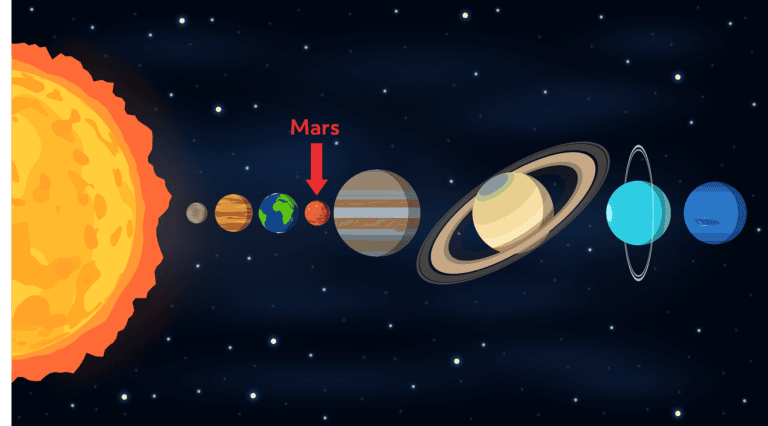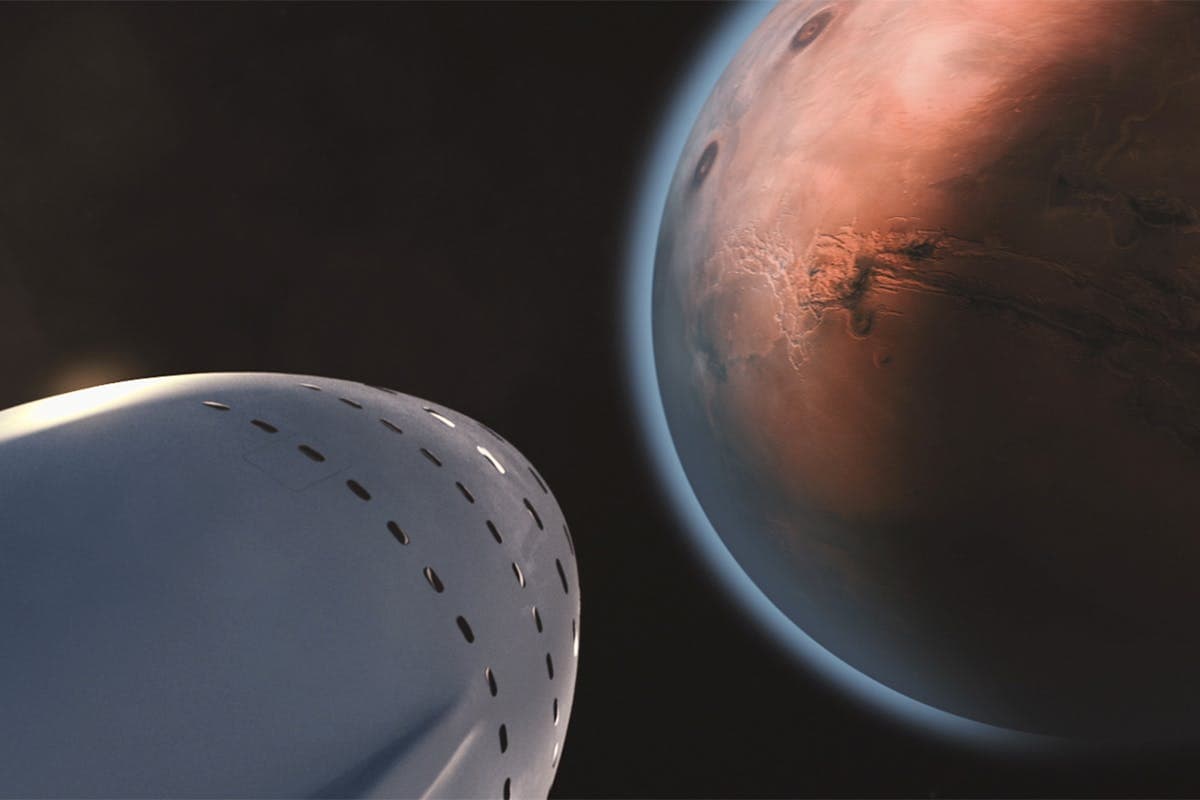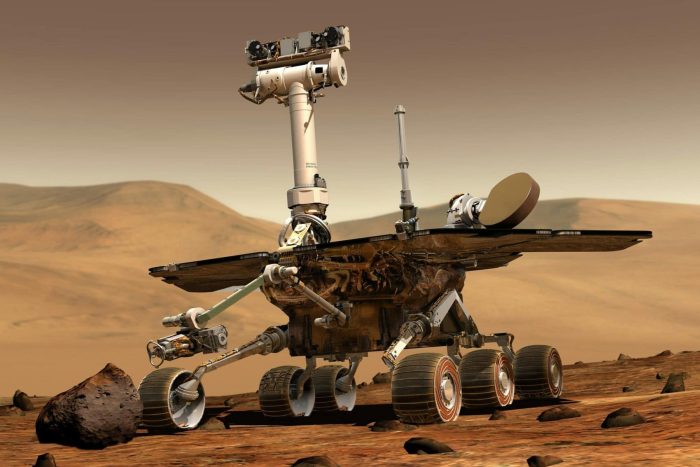Exploration of the Red Planet
Mars, the fourth rock from the Sun, has captivated humanity for centuries. Its fiery red hue, easily visible in the night sky, has earned it the title “Red Planet” and inspired countless tales of otherworldly beings and ancient civilizations. This intriguing world, named after the Roman god of war, is a terrestrial planet with a thin atmosphere, a cold, desert-like surface scarred by ancient volcanoes and impact craters, and two small, irregularly shaped moons, Phobos and Deimos.
For much of human history, our knowledge of Mars was limited to what we could observe through telescopes. Early astronomers like William Herschel meticulously charted the planet’s surface and found that Mars has polar caps and seasons like Earth. But for much of the 19th Century, science was convinced that the similarities we saw, as well as some inaccurate interpretations of data, pointed towards the existence of Martian civilizations. This view of Mars would quickly change when telescopes improved, and space probes could travel amongst the planets.

Explorations in the space age
The dawn of the space age in the mid-20th century revolutionized our understanding of Mars. NASA’s Mariner missions in the 1960s, the first successful flybys of the Red Planet, captured the first close-up images of its surface. These images, though grainy by today’s standards, revealed a cratered, barren landscape, challenging our preconceived notions and providing the first concrete evidence of Mars’s true nature, at least how it exists today.
The Mariner missions also unveiled crucial information about Mars’s thin atmosphere, composed primarily of carbon dioxide with trace amounts of nitrogen and argon. This thin atmosphere, about 100 times less dense than Earth’s, contributes to the planet’s extreme temperature variations, ranging from a frigid -140 degrees Celsius at the poles to a pleasant 20 degrees Celsius at the equator. But these missions also saw signs that Mars had once been a very different planet where liquid water flowed, active volcanoes spewed magma, and the atmosphere was denser, maybe even a place that could host life?
The Viking missions in the 1970s had the task of investigating if life exists on Mars today. The Viking landers analysed the Martian soil, confirming the presence of iron oxide, the source of its distinctive red colour. They also conducted experiments to search for signs of life, although the results remain a subject of debate to this day.
The late 20th and early 21st centuries witnessed the arrival of robotic explorers on the Martian surface. These rovers, starting with the small Sojourner in 1997, demonstrated the feasibility of driving around on the surface of Mars, paving the way for more ambitious missions.
Spirit and Opportunity, twin rovers that landed in 2004, far exceeded their planned 90-day missions, exploring the Martian terrain for years. They traversed vast distances, analysed rock formations, and uncovered compelling evidence of past water activity, a crucial factor in the search for past life. Their discoveries painted a picture of a planet that was once much warmer and wetter than it is today, with flowing rivers, lakes, and possibly even oceans.
Curiosity, a car-sized rover that landed in 2012, has been a game-changer. Equipped with a suite of advanced scientific instruments, Curiosity has been exploring Gale Crater, a vast impact basin that scientists believe once held a lake. It has analysed rock samples, studied the Martian atmosphere, and even detected organic molecules, providing tantalizing clues about the planet’s potential for past or present life.



Humans on Mars
In the past couple of years, focus is increasingly on sending crewed missions to Mars. But to achieve this, new technology must be developed. We will need advanced life support systems, protecting astronauts from radiation, and ensuring their safe return to Earth are just a few of the hurdles that must be overcome. However, the potential rewards are immense, including the opportunity to conduct groundbreaking scientific research, search for signs of past or present life, and establish a permanent human presence on another planet. Some planetary scientists and astrobiologists are asking space agencies and private companies to take possible disruption of scientific exploration into account. If humans land and live on Mars, it could destroy the possibility of finding out whether indigenous life exists or has existed on the red planet.
Beyond just landing on Mars, the vision is to establish a sustainable human presence, utilizing Martian resources to create a self-sufficient outpost. This will involve developing technologies for in-situ resource utilization (ISRU), using Martian resources to produce water, oxygen, and building materials. 3D printing technologies could be used to construct habitats and other structures, while hydroponic farming could provide a sustainable source of food.
Because of the similarities between Earth and Mars, our neighbor has always held a special place in our exploration and understanding of our universe. And ultimately, we seek to understand whether we are alone in the Universe.
Published on 14/02/2025, Written by: Tina Ibsen




Life on Mars?
Perseverance, the latest rover from NASA, landed in the Jezero Crater in 2021. Its mission is to search for signs of ancient microbial life, collect rock and soil samples for future return to Earth, and test technologies for future human missions. Perseverance has already made groundbreaking discoveries, including the identification of organic molecules in an ancient lakebed, further fueling the search for life beyond Earth. It has also been testing MOXIE, an instrument that can produce oxygen from the Martian atmosphere, a crucial technology for future human missions. The samples collected by the rover are planned to return to Earth, originally in the beginning of the 2030’s. However, due to budget cuts, the timeline for the samples to be returned to Earth has been pushed, and as of now, no concrete plans from NASA are public.
While rovers diligently explore the surface, orbiters like Mars Global Surveyor, Mars Reconnaissance Orbiter, and MAVEN continue to provide a global perspective. They have mapped the planet in unprecedented detail, studied its thin atmosphere and dramatic temperature variations, and even peered beneath the surface using radar. These observations have revealed the presence of water ice at the poles and possibly even liquid water beneath the surface, raising intriguing questions about the potential for life to exist in these hidden environments.